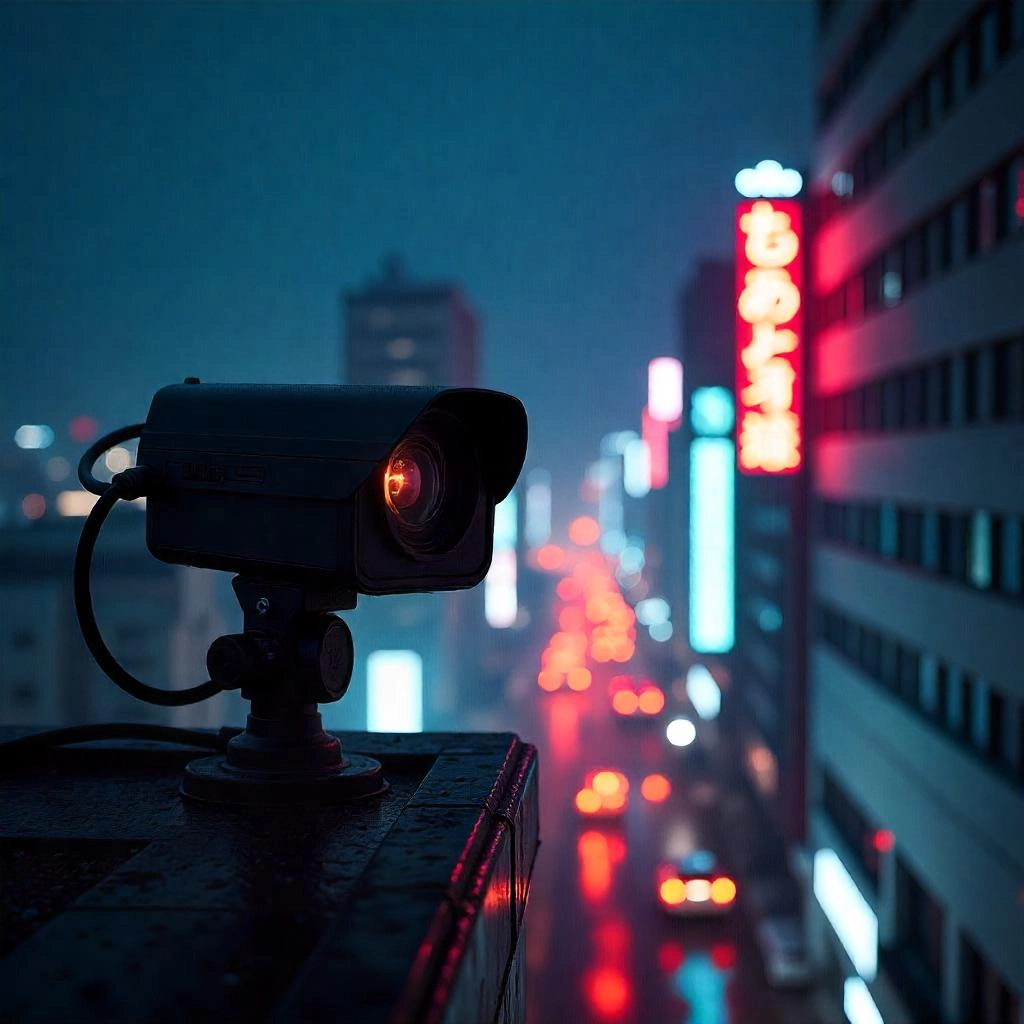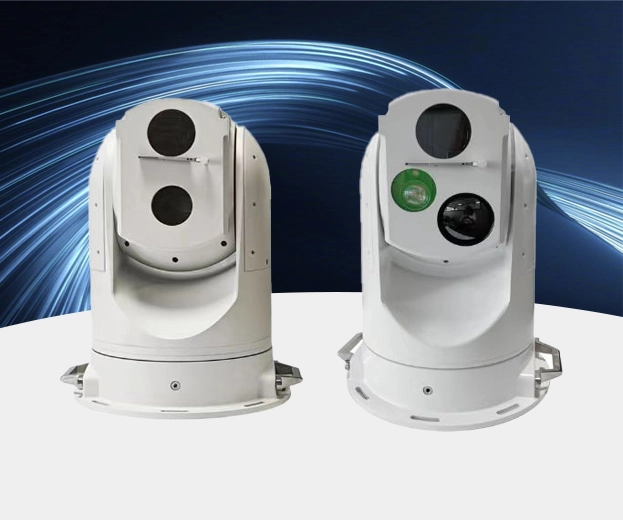In today’s shifting security world, two unique methods rise to the challenge of protecting lives and assets. On one hand, PTZ(Pan Tilt and Zoom)cameras stand as alert, versatile watchers, delivering lively oversight. On the other, traditional CCTV systems hold firm as trusty, unwavering guardians. At Shuoxin, we see the decision not as a contest of supremacy. Instead, it’s about discovering the perfect match for your distinct safety needs. Let’s dive into how these technologies contrast and work together.
PTZ(Pan Tilt and Zoom)Cameras: The Agile Protectors
What elevates PTZ(Pan Tilt and Zoom) cameras in the security realm? Their striking ability to move and react swiftly marks them as exceptional. Unlike rigid CCTV setups, these clever devices swivel side to side, angle up and down, and enlarge images effortlessly—all guided from afar. Their pan feature delivers a complete 360-degree view, while tilt spans from floor to ceiling. Premium models can save up to 256 preset positions. This allows instant shifts to vital viewpoints.
Their speed is a key strength. High-quality PTZ(Pan Tilt and Zoom) cameras dash at dazzling rates, panning up to 220° per second and tilting at 90° per second. Such quickness lets them respond to events as they unfold. Sophisticated gyroscopic stabilization ensures images stay crisp, even during rapid swings. This sharpness is essential for tracking fast-moving individuals or vehicles.
But their talents extend past motion. Many PTZ(Pan Tilt and Zoom) models include smart features, such as auto-return functions that ease them back to standard positions after scans. Auxiliary switches boost their adaptability, connecting with alarms or lighting setups. These careful touches craft surveillance tools that are both mighty and pliable, suiting varied demands.
Traditional CCTV: The Steady Sentinels
Traditional CCTV systems anchor security monitoring with their solid reliability. Their unmoving positions make them ideal for relentless observation of specific spots, like entrances, payment counters, or corridors. Since their gaze never wavers, they record everything in their scope without pause. This steadiness guarantees dependable, continuous footage.
Yet, their fixed design has limits. Unlike PTZ(Pan Tilt and Zoom) cameras, CCTV systems cannot turn to explore events outside their set view. Covering broad areas often demands multiple units. This can raise complexity and upkeep needs. By contrast, one PTZ(Pan Tilt and Zoom) camera might cover the same space.
The gap in zoom abilities is notable. Most CCTV systems use digital zoom, which magnifies images but blurs details. PTZ(Pan Tilt and Zoom) cameras, however, employ optical zoom. This keeps images sharp at full magnification. Such clarity is critical for spotting faces or license plates accurately.
Why Movement Matters in Security Monitoring
Dynamic movement reshapes how surveillance functions. Let’s explore why this adaptability is so powerful.

The Power of Dynamic Surveillance
Picture managing a sprawling parking lot with fixed cameras. You’d need many units to cover all angles. A single PTZ(Pan Tilt and Zoom) camera, however, can sweep the whole area. It can focus on odd activity and follow moving objects independently. Some models achieve panning speeds of 400° per second and tilting at 200° per second. This is quick enough to keep pace with a running person or a speeding vehicle.
This nimbleness offers clear benefits. Fewer cameras cut equipment costs and ease setup. Security teams enjoy smoother operations. They can oversee multiple angles via one interface, rather than managing countless static feeds. This boosts efficiency and responsiveness.
Fixed Views vs. Adaptive Perspectives
Fixed cameras act like guards with a limited gaze. Their steady view demands exact placement. Even small errors in positioning can lead to dangerous blind spots. PTZ(Pan Tilt and Zoom) cameras sidestep this issue. Operators can tweak their view as events develop. Many models let you save key angles as presets. This enables quick shifts to critical areas with one command. Such flexibility is crucial in lively settings, like public gatherings or urgent situations.
PTZ(Pan Tilt and Zoom) Cameras: Expanding Security Horizons
PTZ(Pan Tilt and Zoom) cameras excel where adaptability is key. Their features go far beyond simple monitoring, unlocking new ways to strengthen security.
Mastering Large-Scale Monitoring
Huge spaces, such as airports, arenas, or industrial sites, reveal PTZ(Pan Tilt and Zoom) cameras’ true power. Their full rotational range leaves no area unseen. Automated patrol modes work like tireless sentries, methodically scanning zones. Their unique strength lies in combining wide coverage with precise detail. Even at full zoom, top-tier PTZ(Pan Tilt and Zoom) cameras produce clear images. This lets operators identify people in crowds or read license plates from a distance.
Eliminating Surveillance Blind Spots
Every security system has weak points, but PTZ(Pan Tilt and Zoom) cameras shrink these gaps. Their ability to change direction on command allows instant investigation of incidents. Advanced models offer auto-tracking, locking onto and following subjects automatically. Smart features, like position recall, ensure cameras return to ideal angles after tasks. This automation bolsters constant protection, maintaining steady vigilance.
Ideal Applications for PTZ(Pan Tilt and Zoom) Technology
Each surveillance tool has its strengths. Knowing where PTZ(Pan Tilt and Zoom) and CCTV systems shine helps craft tailored solutions.
Where PTZ(Pan Tilt and Zoom) Cameras Shine
PTZ(Pan Tilt and Zoom) cameras flourish in settings needing responsive oversight. Airports use them to monitor stray luggage. Traffic hubs rely on them to examine accident scenes. Retailers deploy them to prevent theft. Any situation calling for adaptable, smart surveillance gains from PTZ(Pan Tilt and Zoom) features. The preset position function, supporting up to 256 spots in top models, allows rapid viewpoint switches. One unit can watch a doorway one moment and inspect a loading area the next, without manual changes.
When Traditional CCTV Makes Sense
Fixed cameras stay practical for certain needs. Small shops, offices, or homes often find them budget-friendly and simple. They suit areas needing steady recording without frequent view shifts. Yet, covering large spaces with fixed cameras requires multiple units. This can increase long-term costs, despite lower initial prices per unit. For smaller, calm areas, their straightforward design often outweighs these drawbacks.
The Technological Edge of Modern PTZ(Pan Tilt and Zoom) Systems
Today’s PTZ(Pan Tilt and Zoom) cameras harness cutting-edge advancements, pushing surveillance beyond traditional boundaries. Their blend of smart technology and remote capabilities makes them stand out.
AI Integration and Smart Capabilities
Modern PTZ(Pan Tilt and Zoom) cameras tap into artificial intelligence to boost security. Advanced tools enable facial recognition, spot abandoned items, and flag odd behavior. Security teams get instant alerts about risks, rather than watching feeds endlessly. Some models have preset scan patterns, automatically checking high-risk areas at set times. Others offer crowd analysis, detecting gathering trends. These tools are vital for managing public spaces or refining store layouts.
Remote Operation and Automated Efficiency
Current PTZ(Pan Tilt and Zoom) systems free operators from fixed control stations. They can adjust angles, zoom, and focus from phones or tablets. Top models use RS485 protocols for seamless, delay-free control across large setups. Automated features, like smart focus, low-light clarity, and motion tracking, cut manual effort. This lets security teams focus on handling incidents, not operating gear.
FAQs:
Q1: Why pick one technology over another?
Many advanced setups combine PTZ(Pan Tilt and Zoom) and fixed cameras wisely. Static units guard key spots, like entrances, capturing every detail. Meanwhile, PTZ(Pan Tilt and Zoom) cameras roam open areas, zooming in on anything unusual. Imagine a multi-level parking garage: fixed cameras at exits record all license plates, while PTZ(Pan Tilt and Zoom) units patrol the floors, focusing on odd activity. This teamwork delivers thorough, layered protection.
Q2: How do I choose the right surveillance system for my specific environment?
The text directly addresses how to select appropriate security equipment based on the environment and risks, highlighting the suitability of PTZ(Pan Tilt and Zoom) cameras for large, active areas and CCTV for smaller, quieter zones, while emphasizing the balance of coverage, image quality, and budget.


